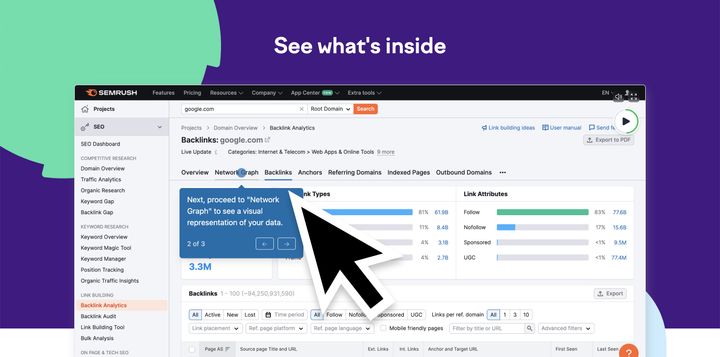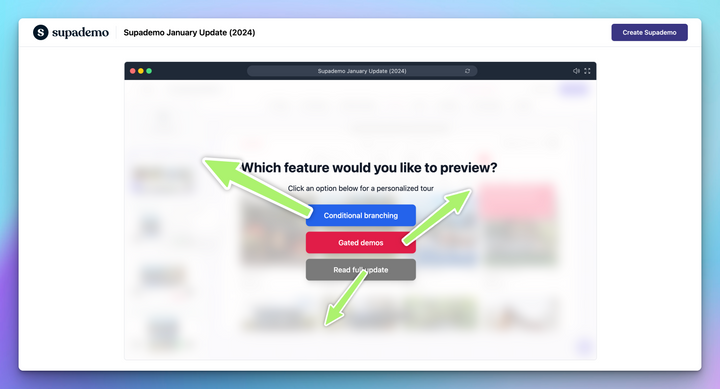In the world of SaaS (Software as a Service) companies, choosing the right growth strategy is crucial for success. Two popular approaches are product-led growth (PLG) and sales-led growth (SLG). While both strategies have their merits, determining which one is right for your business requires careful consideration. In this article, we will explore the key differences between product-led and sales-led growth, the benefits of each approach, and how to implement them effectively.
Product-Led Growth (PLG)
Product-led growth is a strategy that focuses on using your product as the primary driver of customer acquisition, retention, and monetization. With PLG, the goal is to provide a self-service model that allows customers to experience and learn the product for themselves. This approach typically involves offering free trials or freemium models to attract customers and showcase the value of the product.
One of the major benefits of product-led growth is its ability to widen the top-of-the-funnel acquisition. By offering free trials or freemium accounts, you can attract a large number of potential customers who can experience your product firsthand. This increases the chances of converting them into paying customers as they fall in love with your product early on.
To ensure the success of a product-led growth approach, it is essential to focus on creating a contextual and engaging product experience. Since there is no human guidance in this model, your product must be able to convert customers easily. Segmenting users based on their characteristics or job titles can help personalize the onboarding process and guide them towards activation. Additionally, collecting feedback from users, including those in the trial stage, can provide valuable insights for improving adoption and conversions.
With tools like Userpilot, you can easily build these contextual experiences into your product, increasing user engagement and conversions.
Sales-Led Growth (SLG)
Sales-led growth, on the other hand, relies on a sales team and their processes to drive conversions and business growth. In a sales-led company, the sales team plays a crucial role in acquiring, nurturing, and converting leads. This approach is particularly effective for software companies targeting enterprise organizations or complex products that require personalized assistance.
One of the key advantages of sales-led growth is the presence of human guidance throughout the customer journey. Sales reps can provide 1-on-1 assistance to guide sales-qualified leads through every stage of their journey. This reduces friction during the onboarding process and increases the chances of adoption and retention.
Another benefit of a sales-led approach is its ability to target enterprise organizations. These companies often require more advanced software solutions and expertise to implement them. By leveraging a sales-led model, you can better reach and convert these high-value customers.
Furthermore, sales-led growth allows for direct face-to-face interactions with customers, enabling valuable feedback collection. This feedback can help optimize sales strategies, enhance the product experience, and improve customer retention.
Product-Led Growth vs Sales-Led Growth: Choosing the Right Strategy
Choosing between product-led growth and sales-led growth depends on various factors specific to your SaaS company. Consider the following elements when making this decision:
1. Target Audience
Consider your target audience when deciding on a growth strategy. If your product targets small businesses and can be easily learned and adopted, a product-led approach may be more suitable. On the other hand, if your product is more complex and targets enterprise organizations, a sales-led strategy may be a better fit.
2. Pricing Model
Evaluate your pricing model to determine the most effective growth strategy. If you offer a freemium model or free trials, a product-led approach can leverage these offerings to convert customers. However, if your pricing is more complex and dependent on various factors, a sales-led strategy may be more appropriate.
3. Ease of Use
Consider the ease of use of your product. If your product is intuitive and can be easily adopted without extensive guidance, a product-led approach may be the way to go. However, if your product requires more hand-holding and personalized assistance, a sales-led strategy may be necessary to drive conversions.
Ultimately, the right growth strategy for your SaaS company depends on a combination of these factors. It's also worth noting that a hybrid approach, combining elements of both product-led and sales-led growth, can be effective in certain situations.
Benefits of Product-Led Growth
Product-led growth has gained popularity among SaaS companies for several reasons. Here are some key benefits of adopting a product-led approach:
1. Wider Top of the Funnel (TOFU)
Product-led strategies typically offer free trials or freemium packages, attracting a large number of prospects to your product. This widens the top-of-the-funnel acquisition rate, increasing your chances of onboarding and converting more customers.
2. Lower Customer Acquisition Cost (CAC)
Product-led companies often have lower customer acquisition costs compared to other marketing-led companies. By offering free trials or freemium models, the cost of acquiring customers is reduced, as potential customers can try out your product before committing to a purchase.
3. Higher Retention Rate
By providing easy access to your product and allowing customers to experience its value firsthand, product-led growth can lead to higher retention rates. When customers see the immediate value of your product, they are more likely to stick around and continue using it.
Benefits of Sales-Led Growth
Sales-led growth also offers a range of benefits that make it a compelling strategy for certain companies:
1. Less Friction During Onboarding
In sales-led companies, customers have the guidance of a sales representative who walks them through the product. This reduces friction and ensures a smoother onboarding process.
2. Target Enterprise Organizations
Sales-led growth allows you to target enterprise-level organizations that require more advanced software solutions. By leveraging a sales-led approach, you can effectively reach and convert these high-value customers.
3. Collect Insightful Customer Feedback
Direct face-to-face interactions with customers in a sales-led model enable you to collect valuable feedback. This feedback can be used to optimize sales strategies, improve the product experience, and enhance customer satisfaction.
Implementing Product-Led Growth Effectively
To successfully implement a product-led growth strategy, consider the following key experiences to build into your product:
1. Segment Users with Welcome Screens and Personalized Onboarding
Segmenting users based on their characteristics or job titles allows you to provide personalized onboarding experiences. By understanding their specific needs, you can guide them towards the most relevant features and value propositions.
2. Use Interactive Walkthroughs Instead of Product Tours
Interactive walkthroughs go beyond simply showing users around your product. They actively engage users and teach them how to use different parts of your product. This hands-on approach increases the chances of users reaching their "aha" moments and achieving feature adoption quickly.
3. Utilize Checklists to Drive Users to Activation
Onboarding checklists can serve as a helpful guide for new customers, directing them towards important tasks that will help them derive value from your product. By breaking down the onboarding process into manageable steps, you can increase the chances of users reaching the activation stage.
4. Collect Feedback During the Trial Period
Collecting feedback from users, particularly during the trial phase, can provide valuable insights for optimizing your conversion process. By understanding the barriers or concerns that prevent users from upgrading to paid accounts, you can offer solutions that address their specific needs and increase trial-to-paid conversion rates.
Conclusion
When it comes to driving growth for your SaaS company, choosing the right strategy is crucial. Product-led growth and sales-led growth offer distinct approaches, each with its own set of benefits. Consider factors such as your target audience, pricing model, and product usability when making this decision. Remember that a hybrid approach that combines elements of both strategies can also be effective. By understanding the strengths and limitations of each approach and implementing them effectively, you can drive growth and success for your SaaS company.




